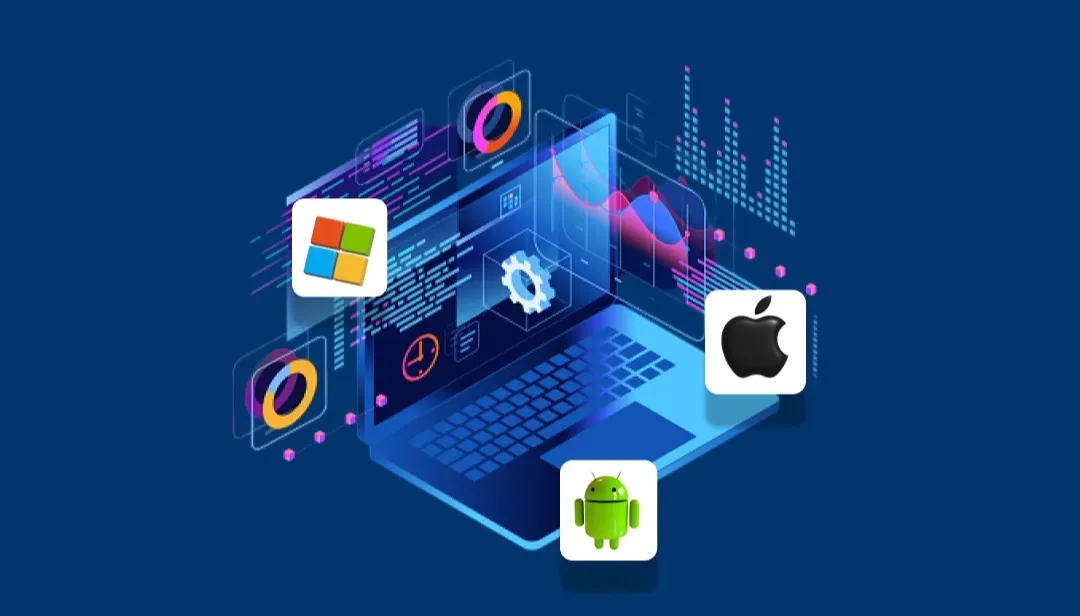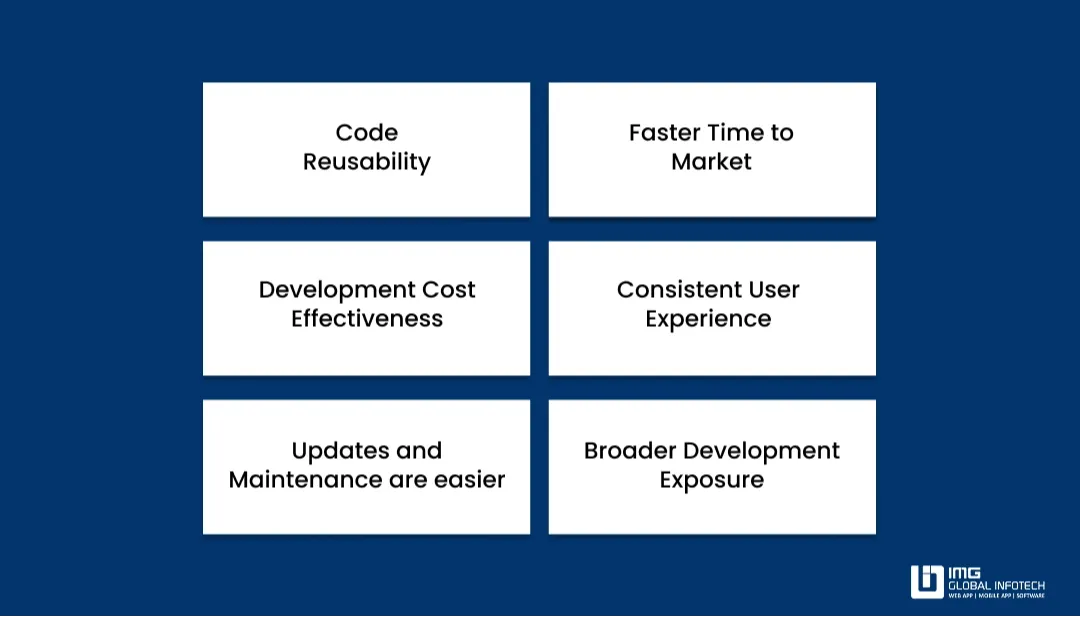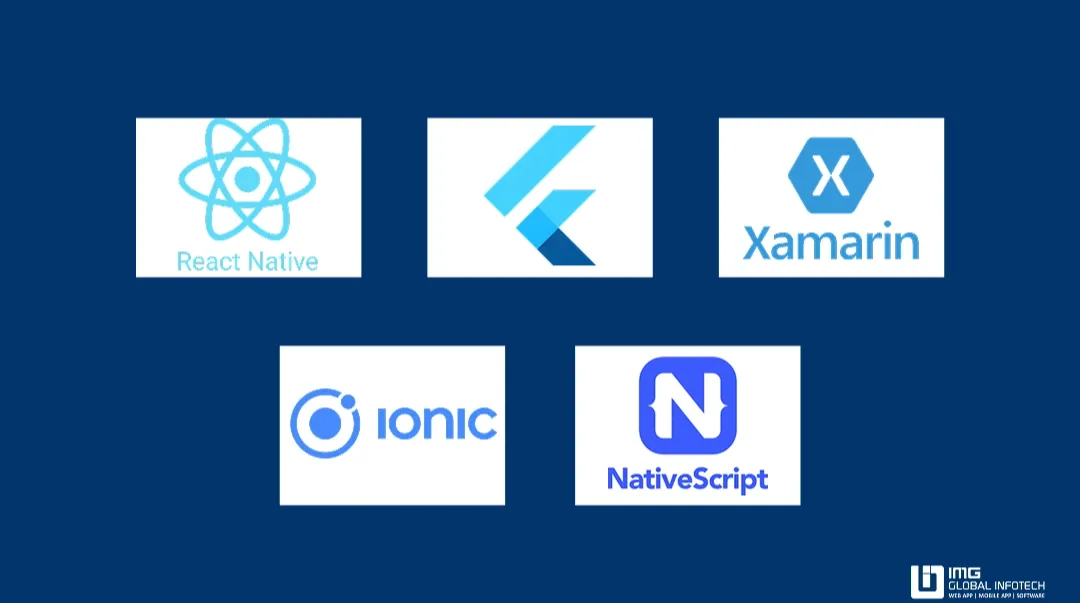How To Build A Cross-Platform App: Complete Guide
Dipti Singhal
Jul 23, 2025

In today's mobile-focused environment, businesses want to reach users on different platforms while avoiding double the time and cost of developing the application. Cross-platform app development allows developers to create a single application that runs smoothly across iOS, Android, and even the web using the same codebase. `No matter if you are a startup or enterprise, creating a cross-platform app provides a strategy for increasing the reach of your application or service and resources. This ultimate guide will explain everything you need to know about cross-platform app development, including what cross-platform development consists of, the benefits, the top frameworks for cross-platform development, the development process, costs associated with the development, and more. Once done, you will learn how to build an efficient and scalable cross-platform app for your business.
What is a Cross-Platform App?
Cross-platform apps are mobile or desktop applications that are built to run on multiple operating systems (OS), such as iOS, Android, and Windows using a single code base. With cross-platform development, developers use the same code for as many platforms as possible, which saves time and also saves costs on development. Popular frameworks for cross-platform development include React Native, Flutter, and Xamarin commonly used which strive to achieve consistent performance and user experience across all targeted devices.
Benefits Of Cross-Platform App Development

Cross-platform app development is constantly on the rise. Companies love the ability to reach wider audiences and save time and money. It involves creating a single codebase application and deploying it across multiple platforms and can help to streamline the development process and maximize efficiencies. Here are six major advantages of cross platform app development.
1. Code Reusability
The most appealing benefit of cross-platform development is code reusability. Mobile app development companies can create a single codebase that can run on multiple platforms, thus creation of iOS, Android, or Windows apps are no longer required separately. Because of this, development cycles are drastically shortened and less code means easier maintenance and updates.
2. Faster Time to Market
Because of a single codebase that our development teams can deploy to multiple platforms, time spent developing applications is significantly reduced. Development teams can work more efficiently, move faster to test the application, and deploy the application to multiple platforms at once. With the rapid deployment cycle of cross-platform apps comes a competitive advantage in the application market.
3. Development Cost Effectiveness
Developing separate apps for each platform can be expensive. Cross-platform app development is cost-effective because there is less need to employ different development teams, while the testing and deployment of each application will be much faster across all platforms simultaneously. This benefit helps to minimize Android app development and deployment costs and is perfect for startup companies or small organizations with a small budget.
4. Consistent User Experience
Cross-platform frameworks ensure that the user experience and functionality across each platform remains the same. This offers users brand continuity and satisfaction because they are able to use iOS, Android or Web App and it feels the same from a user experience perspective.
5. Updates and Maintenance are easier
Many times ios app development has the same or similar features which are what we call the codebase. Maybe once a feature is updated or a bug is fixed or a new version pushed the effort is far less because now that update is applied automatically across all platforms thus time and money spent on each platform's update or maintenance is greatly reduced.
6. Broader Development Exposure
An advantage of cross-platform apps is that companies can access users across multiple platforms including iOS, Android or Web App. From the users perspective there is increased visibility and growth potential for new users without you having to put additional development work in for every operating system.
Top 5 Frameworks For Cross-Platform App Development

It is important to choose the right framework to build efficient scalable cross-platform applications. Here are the top five frameworks dozens of developers use to create a high-performance app that will run on iOS, Android with other platforms in future.
1. React Native
React Native is built by Facebook and is among one of the most popular cross-platform frameworks. It is a JavaScript framework where you build mobile apps similar to native by utilizing a single codebase. React Native has a solid community, reusable, high-performing components and faster development cycles which makes it an attractive option to build applications for all both startups and enterprises.
2. Flutter
Flutter is an open-source, Google-backed UI toolkit that uses the Dart programming language. It comes with a rich selection of pre-made widgets and provides excellent performance with a native feel. Flutter also offers a hot reload feature that lets developers see their changes directly, making it fast to developing apps.
3. Xamarin
Xamarin is owned by Microsoft. Xamarin is a user interface framework that enables developers to build apps using the C# programming language. Xamarin has native performance and can integrate into platform-specific APIs. It is mostly used for enterprise-level apps needing a lot of security and to keep performance consistent.
4. Ionic
Ionic is a great framework that runs on open-source, built entirely on web technologies - HTML, and CSS, and JavaScript. Ionic is a good option for hybrid apps to have a web-based experience. Ionic allows for the use of Angular and React, and there are thousands of open-source plugins and UI components for developers to pull from to facilitate rapid development.
5. NativeScript
NativeScript allows developers to build mobile apps using JavaScript, TypeScript, or Angular. Developers have direct access to native APIs and components, which ensures that the apps perform well, and experience a native feel. It is also an excellent option for teams who have familiarity with web technologies and are looking to build cross-platform apps.
Step-By-Step Process To Build A Cross-Platform App

If you're wondering how to make a cross platform mobile app this is time you will clear your thoughts. Developing a cross-platform app is no different than developing a regular app; it should be approached in an organized manner and with an understanding of the functionality, performance, and the usability experience on platforms. In order to build your cross-platform app efficiently, follow this guide below:
1. Define Your App Idea and Goals
Before you do anything else, you need a clear definition of what your app is going to do, who your audience is, what the goal is and what value it will provide for the user. Identify exactly what problem your app will solve and offer solutions. At the start of the process, you need to set clear goals to align the development process with your business objective and the expectations of your audience.
2. Choose The Right Cross-Platform Framework
Once you are clear about your app's idea and goal, select a cross-platform software development framework to use for development. It's important to pick a framework that's appropriate for the complexity of the app, performance requirements, and your team's experience. benefits of cross platform app development include React Native, Flutter, Xamarin, and Ionic. Choosing the correct framework will have a large effect on how quickly, performatively, and efficiently your app is developed and maintained.
3. Design the UI/UX
When finally creating a complex UI, be intentional in designing a user interface that creates a consistent experience across all platforms while also referencing the expected design guidelines outlined by the individual platforms. Consider using tools to design flexibility like Figma or Adobe XD. You can create wireframes and ultimately prototypes with the precursor to coding for the project. User experience is extremely important when developing a user-friendly and intuitive UI for your users UI/UX Design, ultimately creating a better adoption and retention rate for your app.
4. Develop the App
Once you design your app, you can code the app with the framework you selected. Focus on developing the core features of the app first, then work to add other features as time permits. Use reusable components and modular code in your cross-platform app for better maintainability. Work with both frontend developers and backend developers to integrate APIs, databases, and third-party services.
5. Test on all Platforms
Make sure to test on Android, iOS, and any other target platforms. This means performing functional, usability, and performance testing to find bugs and inconsistencies. Build in testing automation and test with real devices to ensure the app maintains proper functionality on all screen sizes and operating systems.
6. Launch and Maintain
Finally, once the app has been tested and approved, launch it in the App Store, Google Play, or other relevant platform. After the app launches, start collecting user feedback, monitoring performance, and releasing regular updates to fix bugs, maintain security, and add new features based on user needs.
Cost To Build A Cross-Platform App
The cost to build a cross-platform app can be greatly influenced by all kinds of factors such as the app's complexity and the lifestyle of the development team. On average, a basic cross-platform app will cost between $15,000 and $50,000, while more complex cross-platform apps can cost anywhere from $70,000 to $150,000 or more for advanced features. Here are seven factors that affect your total Mobile app development cost:
1. App Complexity
The extent and characteristics of your app affect the cross platform app development cost. A basic app with little to no functionality and a simple user interface and user experience will be much cheaper than a complicated app that includes things like real-time chat functionality, geolocation, payment gateways, and an animated user experience.
2. Platform Choices
Even with cross-platform development allowing for one code base to be used on different platforms, the reality is that every platform often needs some minimum adjustments if your app is used on both iOS and Android. Building an app for both platforms with platform-specific adjustments will add some time and costs compared to building for a single platform.
3. UI / UX Design
A well-polished user interface is important as it will help with user retention. Custom designs and animations and interactive features will often increase cross platform app development cost. Using pre-built UI kits could lower costs but lessens your creativity and brand individuality.
4. Development Framework
Normally, the use of a framework such as Flutter, React Native, Ionic, or Xamarin will affect the time and cost of development to a varying degree. Certain frameworks offer pre-built components and active community user groups that may lower development time. Other Cross platform app development frameworks require the developer to write all the code and all the components going into the app.
5. Back-end Development and Integration.
If your best cross platform mobile development requires a back-end that runs reports, data collection, user data, or real-time features, then you will have an increased cost to build cross platform mobile apps. Using third-party services (payment gateways, maps, social login, etc.) will increase your complexity and costs.
6. Developer location and talent
cross platform app development company rates vary significantly around the world. Hiring developers from places like India and Eastern Europe will be cheaper than hiring developers from North America and Western Europe. However, the cost to create a cross platform app often depends on experience, skill level, and other factors.
7. Maintenance and updates
You will also incur ongoing costs to maintain the app after it is live (bug fixing, feature updates and OS updates). Generally, you should consider allocating around 15-20% of the initial development budget each year for new features and updates.
Cross-platform app development is often cheaper than building a native app, but the final development cost will depend on the overall scope of your app, and its specific needs. Choosing a Cross platform app development company can help you achieve the right balance between quality and price, while also delivering a product that meets your expectations, as well as the needs of your users.
Challenges In Cross-Platform Development

Cross-platform app development may have a lot of benefits, like lower costs and a faster time-to-market; developers will face challenges that require careful consideration. Here are some of the more common challenges in cross-platform app development:
1. Performance issues
Cross-platform apps are not going to be able to fully match the performance of a native app. Because of the layers of abstraction and shared codebases involved, certain features, like animations and transitions or potential hardware use, will suffer in speed compared to native apps.
2. Limited Access to Native APIs
Even though modern frameworks give access to many device features, certain platform-specific APIs or platform features aren't fully available. Cross platform mobile app development companies will need to write unique code or external code which makes development and maintenance difficult.
3. Inconsistent User Experience
Operating systems expect their users to follow certain user interface and user experience guidelines. After creating all the UI components, following the native design is one of the most important things, and inconsistent or lack of effort in this area will lead to user dissatisfaction.
4. Debugging Problems
Debugging cross-platform apps is often more complex than debugging native apps. When errors happen in the best platform for app development, you can never say for sure that they will happen on every operating system. You have to spend extra time and resources identifying and making them platform specific.
5. Security Concerns
If left unmanaged, cross platform desktop app development could be more sources of security risks. You are increasing your chances of vulnerabilities with the use of code every team member shares (ex. multiple code APIs) and with the use of third-party plug-ins (ex. JavaScript, Flutter, etc.) that are shared with other multiplatform app development companies.
Conclusion
Creating a cross-platform application is a good capability for maximizing outreach, development time, and cost while not sacrificing quality. With the right framework, an understanding of the service development process, and the common pitfalls associated with building best cross platform app development businesses can create high-quality apps that are highly usable and perform well across a variety of devices and platforms. From entrepreneurs to enterprises, cross-platform development retains the flexibility and scalability you need to have an ios and android cross platform development that will thrive in the ever-competitive digital landscape. With the proper bandwidth and development strategy, you will be able to deliver a seamless experience to the consumer on any device.
Dipti Singhal is a skilled Content Writing Specialist at IMG Global Infotech, with strong expertise in creating engaging, SEO-optimized content for various industries. She focuses on blending storytelling with effective keyword strategies to help businesses connect with their audience and improve their online visibility. Passionate about delivering high-quality content that drives real results, Dipti plays an essential role in strengthening the company’s digital presence.












